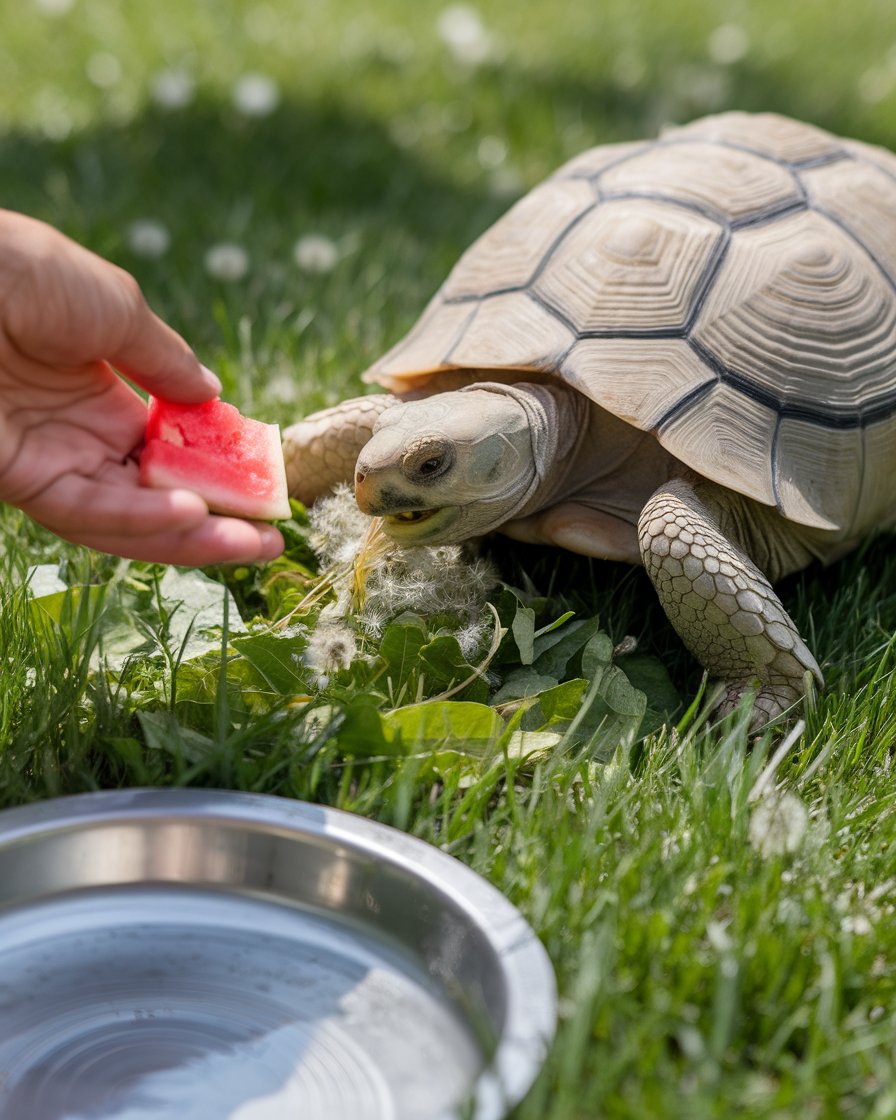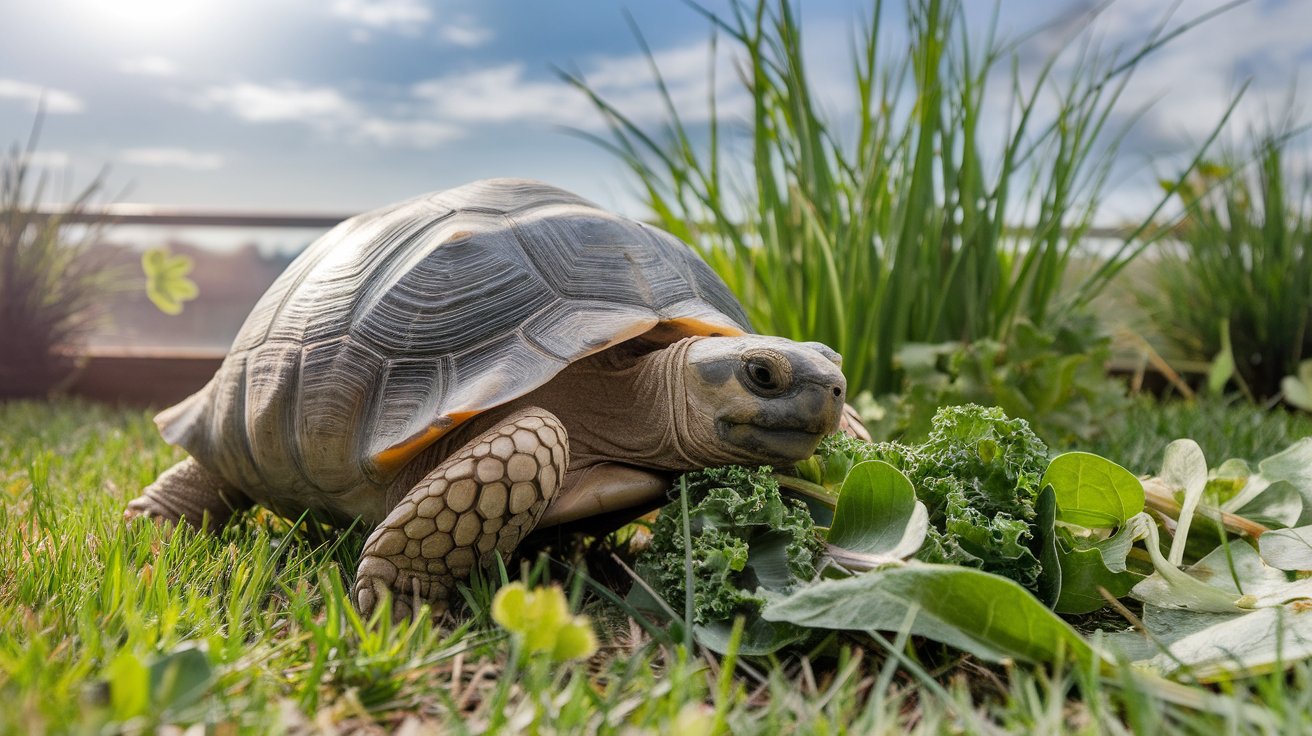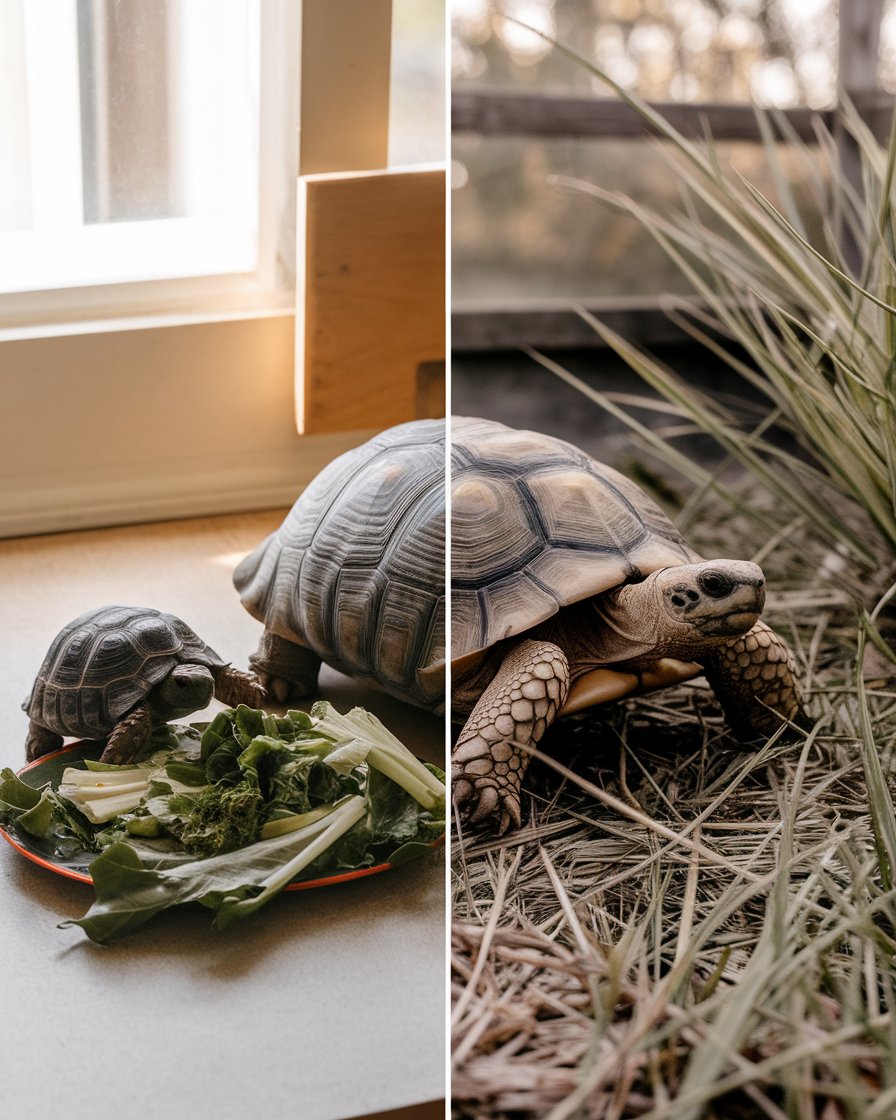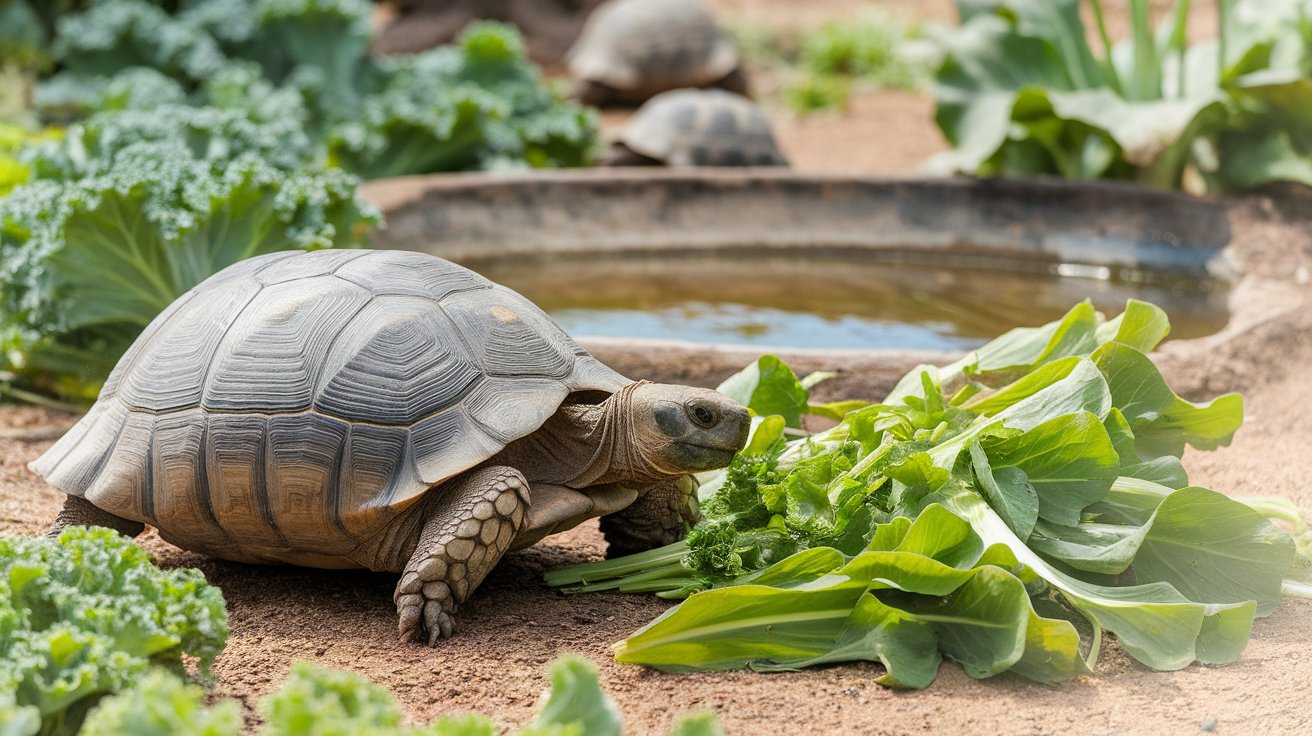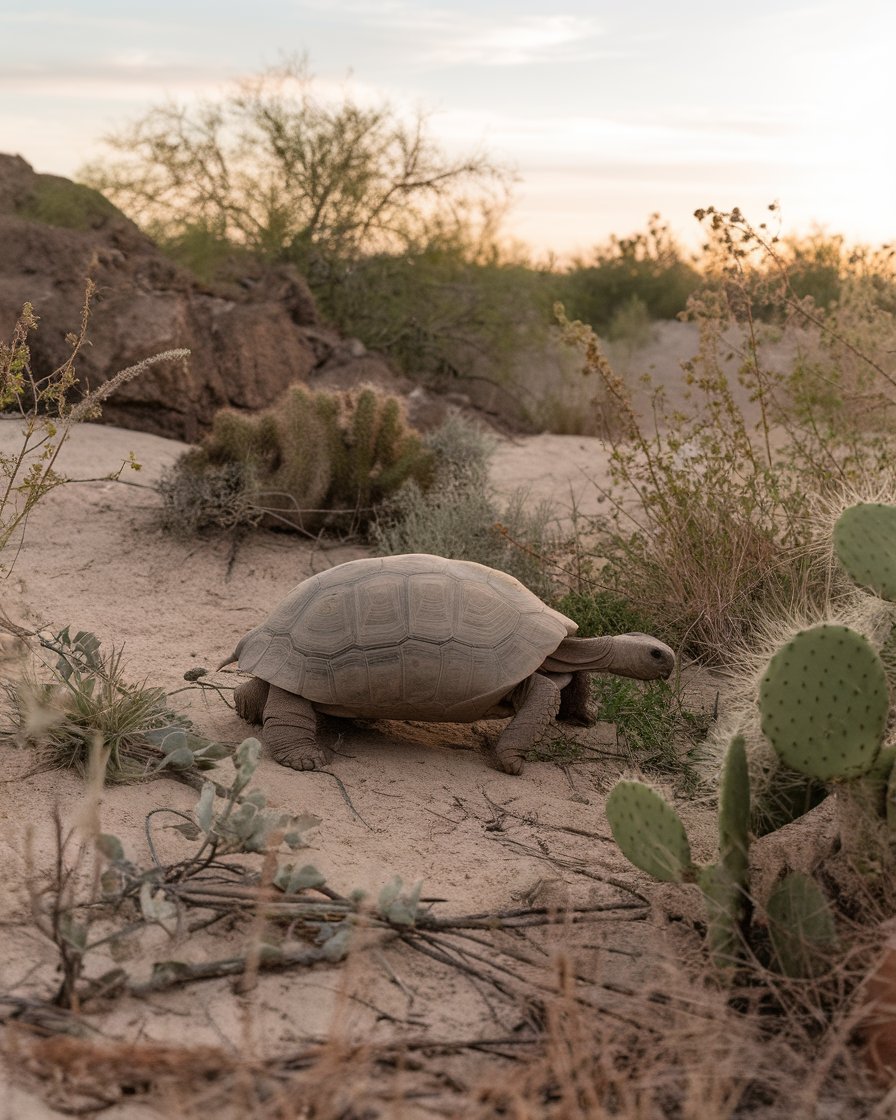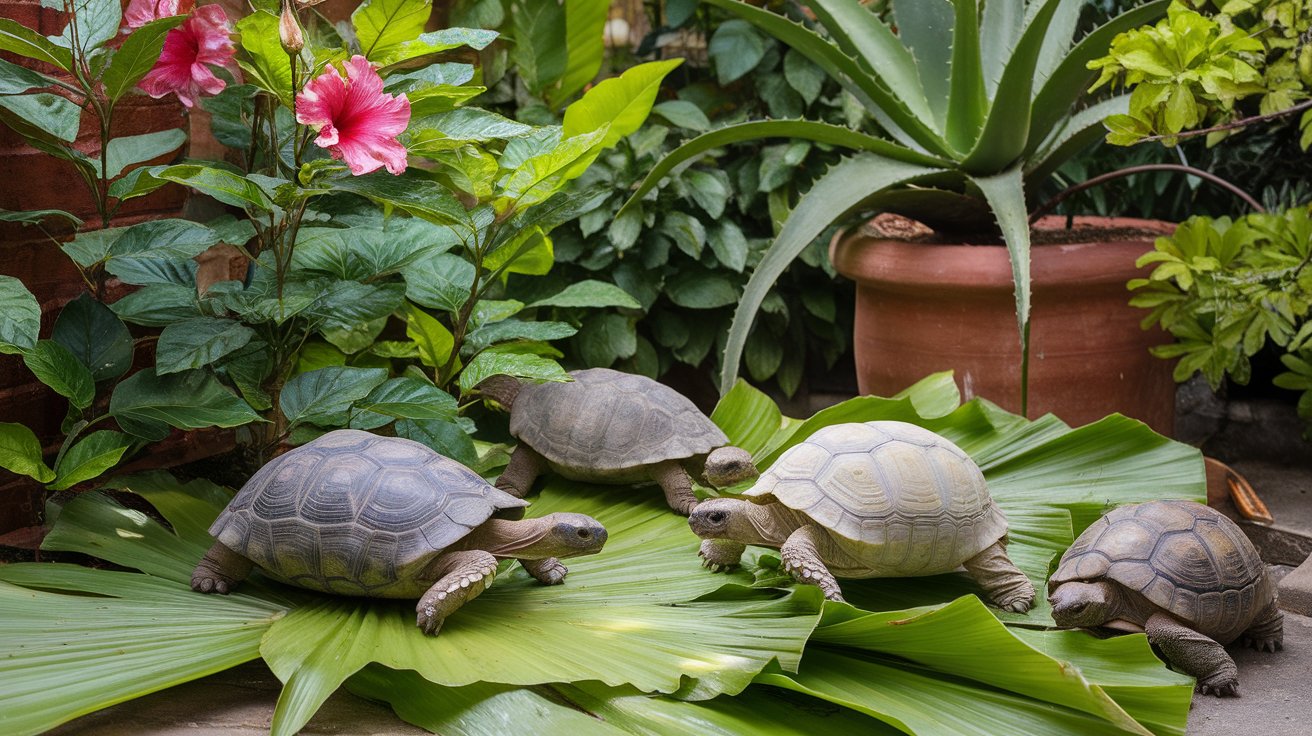Introduction
A balanced tortoise diet is essential to keeping your shelled friend healthy and active. Tortoises can eat a variety of vegetables, fruits, and greens, but it’s important to know which foods are nutritious and which could be toxic. Leafy greens like parsley and dandelion leaves are excellent for providing calcium, while vegetables like celery and squash offer fiber. A tortoise food pellet can also be a useful addition, ensuring they meet their nutritional needs. However, moderation is key, as certain fruits with high sugar content, such as cherries, should only be given occasionally.
Tortoise species, such as the sulcata or Russian tortoise, often have specific dietary requirements that vary based on their natural environment. In the wild, tortoises eat a wide variety of plants, which include leaves and flowers. To keep your tortoise healthy, it’s crucial to replicate this diet in captivity. Always ensure that the food is safe, as some plants like rhubarb and certain fruits, like oranges and lemons, could be toxic to tortoises.
Key Takeaways
- A balanced diet of vegetables, leafy greens, and occasional fruits is essential for a tortoise’s long-term health.
- Tortoises need calcium-rich foods, like kale and dandelion leaves, to maintain healthy shells and overall well-being.
- Feeding fruits in moderation is crucial to prevent digestive issues due to their high sugar content.
- Tortoises, particularly indoor ones, may need dietary supplements like calcium powder and vitamin D3 for optimal health.
- Different tortoise species, such as Russian and sulcata tortoises, have unique dietary needs based on their natural environment.
- Mimicking a tortoise’s natural diet, including fibrous plants and UV exposure, is vital for their health in captivity.
What Do Tortoises Eat: Understanding a Balanced Tortoise Diet
A balanced tortoise diet is crucial for their long-term health. Pet tortoises often require a mix of vegetables, leafy greens, and fruits to meet their nutritional needs. Tortoises need a variety of foods like dandelions, kale, and prickly pear cactus to thrive. Avoid foods high in sugar content, as moderation is key for their digestive system. Leafy greens such as collard greens and dandelion leaves are rich in calcium, which helps maintain healthy shells. A balanced tortoise diet ensures your shelled friend gets the vitamins and minerals necessary for their overall well-being.
Key Fruits for a Well-Balanced Tortoise Diet
1. Strawberries
Strawberries are a great fruit to offer your tortoise occasionally. They are rich in antioxidants and vitamin C, which support a healthy immune system. However, they should be given in small amounts due to their high sugar content. A piece of strawberry once or twice a month is more than enough to add a bit of variety without overwhelming your tortoise’s diet.
2. Melon
Melons, such as cantaloupe or watermelon, are hydrating and contain essential vitamins like vitamin A and potassium. These can help maintain your tortoise’s hydration levels, especially during warmer months. However, like strawberries, melon should be fed sparingly due to its sugar content, making it an occasional treat rather than a daily staple.
3. Banana
Bananas are a favorite among tortoises but should be offered only in very small quantities. While they are rich in potassium and vitamins, their high sugar levels can cause digestive imbalances if given too frequently. A small piece of banana once a month is sufficient to prevent digestive issues.
4. Papaya
Papaya is a lesser-known but excellent fruit option for tortoises. It contains enzymes that help with digestion, along with plenty of vitamin C and fiber. A small portion of papaya every few weeks can boost your tortoise’s nutritional intake while ensuring variety in their diet.
5. Blueberries
Blueberries are packed with antioxidants and are another fruit that can be given in moderation. They are low in sugar compared to other fruits, making them a slightly better option for frequent feeding. Nonetheless, it’s important to limit the portion to a few blueberries every couple of weeks to avoid overconsumption.
Essential Vegetables and Greens for a Balanced Tortoise Diet
Vegetables and leafy greens are the cornerstone of a healthy tortoise diet. Leafy greens such as collard greens, kale, and dandelion leaves provide the calcium and fiber that tortoises need to support shell growth and digestion. Additionally, including prickly pear cactus and bell peppers can offer extra nutritional value. It’s essential to rotate these greens regularly to maintain a varied diet for your tortoise, preventing nutritional deficiencies.
Fruits to Include in Moderation for a Healthy Diet
While vegetables should make up the bulk of your tortoise’s diet, certain fruits like strawberries, melon, and banana can be offered occasionally. These fruits provide a boost of vitamins but should be fed in moderation due to their high sugar content, which can lead to digestive issues if given too often. A small piece of strawberry or melon once a week can add variety to their diet without disrupting their nutritional balance.
How to Feed Your Tortoise: Tips for Meeting Their Nutritional Needs
Feeding your tortoise is more than just providing food; it’s about ensuring they get the right balance of nutrients. You need to supplement their diet with calcium and vitamin D3, which can be found in foods like leafy greens and vegetables. It’s best to offer a shallow dish of water and avoid iceberg lettuce, as it provides little nutritional value. Sulcata tortoises, for example, require a plant-based diet rich in variety to meet their nutritional needs. By offering different fruits and vegetables, you help maintain a healthy and balanced diet for your pet.
Case Study: The Impact of Proper Fruit Selection on Tortoise Health
A case study conducted on Sulcata tortoises revealed the importance of carefully selecting fruits to complement their diet. In this study, two groups of tortoises were observed over a six-month period. One group was fed a diverse, balanced diet including a small amount of fruits like strawberries and melons, while the other group had unrestricted access to high-sugar fruits. The results were significant: the group with a controlled fruit intake showed better shell strength, improved digestion, and overall better health. On the other hand, the group consuming high-sugar fruits regularly experienced digestive issues and slower shell growth.
This study underscores the importance of moderation when feeding fruits to tortoises. By limiting fruit intake to occasional treats and focusing on leafy greens and vegetables, owners can ensure their tortoises maintain a balanced diet, which is critical for long-term health.
Importance of Supplementing Calcium in Your Tortoise’s Diet
Calcium is a vital nutrient for tortoises, as it supports shell strength and overall bone health. Providing calcium-rich foods like kale, dandelion leaves, and clover is crucial. Additionally, you may need to supplement their diet with calcium powder or cuttlebone, especially for indoor tortoises that lack natural sunlight exposure. Ensuring your tortoise has enough calcium is essential for preventing metabolic bone disease and keeping them healthy.
Providing Hydration: Water and Moisture-Rich Foods
Tortoises require consistent hydration to maintain a healthy digestive system. A shallow dish of fresh water should always be available, but adding moisture-rich foods like melon and cucumber to their diet can also help. These foods not only hydrate but provide extra nutrients. Regular access to water and hydrating foods ensures that your tortoise’s nutritional needs are met, supporting their overall well-being.
Common Tortoise Breeds and Their Varied Diets
Different tortoise breeds have unique dietary needs, but they all benefit from a varied diet. Russian tortoises, for example, often eat a mix of leafy greens like kale, cabbage, and mustard greens. Mediterranean tortoises may enjoy dandelion leaves, while red-footed tortoises also benefit from small amounts of fruit like strawberries and melon. It’s essential to know the specific dietary requirements of the species of tortoise you own. A well-rounded tortoise diet ensures they get the nutrients they need to stay healthy and active.
Russian Tortoises: What They Eat and Why
Russian tortoises are known for their love of leafy greens and fibrous plants. A typical diet for a Russian tortoise includes vegetables such as collard greens, kale, and mustard greens. It’s important to avoid foods high in oxalic acid, like spinach, which can inhibit calcium absorption. Feeding your Russian tortoise a varied diet of vegetables ensures they get the nutrients they need while avoiding harmful foods that could impact their health.
Sulcata Tortoises: Feeding a Large, Grazing Species
Sulcata tortoises are natural grazers, often consuming fibrous plants and grasses in the wild. When kept as pets, it’s essential to replicate this diet by offering them grass-based foods, such as hay and clover. Adding leafy greens like kale and collard greens ensures they receive a balanced diet. Because sulcatas can grow quite large, their diet must meet their higher nutritional demands, including calcium and fiber.
“A tortoise makes no progress without sticking its neck out.” – Chinese Proverb
What Tortoises Eat in the Wild: Adapting to Your Pet’s Natural Diet
In the wild, tortoises graze on a variety of plants, cacti, and weeds. This natural grazing behavior helps them maintain a balanced diet. To mimic this in captivity, feed your tortoise a diet rich in plant-based foods. Mediterranean tortoises often graze on leafy greens, while desert species like sulcata tortoises favor more fibrous plants. It’s crucial to offer a mix of vegetables and fruits to mimic their natural feeding habits. You may need to supplement their diet with calcium and vitamin D3 to ensure your tortoise is getting the nutrients they would typically find in the wild.
Mimicking a Wild Diet for Your Pet Tortoise
Feeding tortoises in captivity requires attention to mimic their natural diet. In the wild, tortoises graze on a variety of plants, cacti, and weeds, which provide them with the necessary nutrients. Including fibrous vegetables like kale, clover, and dandelion in their diet helps replicate the natural grazing habits of wild tortoises. By offering a wide selection of plant-based foods, you ensure your pet receives a diet similar to what they would eat in the wild.
Supplementing Natural UV Exposure and Vitamin D3
Tortoises in the wild receive ample sunlight, which helps them produce vitamin D3. If your tortoise is kept indoors, you may need to supplement their diet with vitamin D3 to support calcium absorption. Using UV lamps and providing calcium-rich foods like kale and dandelion leaves can help maintain their shell health and overall well-being. Ensuring proper UV exposure is vital for preventing nutritional deficiencies.
Conclusion
Taking care of your tortoise means giving them the right food to stay healthy and happy. A tortoise food plan should have a good mix of vegetables for your tortoise, leafy greens, and just a bit of fruit. This helps meet their nutritional needs. Leafy greens like dandelion leaves and kale are a great source of calcium, helping their shells grow strong, while veggies like celery and squash are good for their digestive system. But be careful—fruits like cherries, which have high sugar content, should only be given in small amounts.
Knowing what tortoises can eat is super important, especially because some foods, like rhubarb, could be toxic to tortoises. It’s always better to be safe than sorry. Tortoises also enjoy variety, and getting a mix of leafy greens and vegetables keeps them healthy. Pet stores offer tortoise food pellets that can be added to their diet, giving them extra nutrients. With the right care, your shelled friend will stay healthy and active for a long time.




